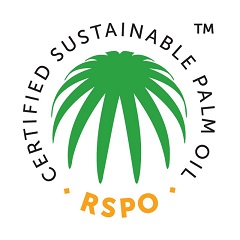ClimateWith regards to climate, the conditions for growing chestnut trees are favorable throughout Hungary. The chestnut’s temperature needs are within +5 and +15 °C, and since our country’s mean temperature is 10 °C, our climate is suitable for chestnut growing. In addition, chestnuts tolerate extreme weather conditions, and thus, none of the winter, late-spring, or early-fall chills damage them. Furthermore, our country’s northern locations also have favorable life conditions for chestnut growing.
At domestic growing sites, our chestnut tree breeds have a growing season of 176-183 days. The types that require the least number of heat units are the western Transdanubians. The ripening of these breeds’ fruits are certain every year, even at higher elevations; moreover, the end of the growing season, as well as the fall leaf coloration and defoliage period take place smoothly, i.e. without frost
damage.
SoilOf all the characteristics of a growing site, soil has the greatest significance: It is the soil that limits the opportunities for chestnut growing to certain pre-determined areas. In earlier times, chestnuts were considered typical limestone-avoiding plants. That observation, however, was only indirectly valid, considering that the determining factor is now held to be not the lime content of the soil, but the relative amount of absorbable potassium in it. Nevertheless, it is true that the soil’s lime content, i.e. its alkaline chemistry (high pH value), impedes the plant’s ability to absorb potassium.
According to the growth rate norms of a chestnut tree’s trunk circumference, the average number for a ten-year old tree is 40 centimeters. However, in case of soil with a pH value higher than 6.4, the growth rate rapidly falls below average. The plant is not so needy with regards to other soil characteristics, e.g. the thickness
of the topsoil, bondage; nevertheless, the trees’ productivity rate is a function of the soil’s fertility. For instance, in very thick and cold clay soil, or in shallow topsoil and dry growing locations, the growth rate of the chestnut tree is slow, the fruits are small, and thus, the plantations are not profitable.
The annual precipitation needs of a chestnut tree is above 600 millimeters. Lasting rainstorms in the late-June and early-July blooming season are detrimental to its fertility. At the same time, droughts in August and September can also significantly decrease the size of the fruits.
NutrientsWe have relatively few supporting data regarding the nutritional needs of chestnuts. Such thorough research was only conducted in Japan, on chestnut types, which are relatives of our domestic chestnut breeds (Eynard I.). According to that research, the nutritional needs of an acre of chestnut orchard are the following:
The aforementioned research found a significant relationship among adequate fruit size and necessary N-content, as well as the proportion of N to K in the chestnut’s fruits and leaves. The nitrogen content inside the fruits must be between 1.14% and 1.33%, and between 1.98% and 2.34% inside the leaves, while the proportion of potassium to nitrogen in the fruits must be between 0.97% and 0.68%.
According to reasearch done on Italian chestnut trees (Fenaroli L.), the percentage of main nutrients found in the leaves’ dry matter, as well as their transformation during the growth season, are very peculiar to the chestnut tree: it needs high levels of potassium but no calcium, so while the rest of the nutrients migrate to the overwintering parts of the plant, calcium remains in the foliage that the tree loses every fall.
In other words, the plant regularly removes all unnecessary nutrients.




